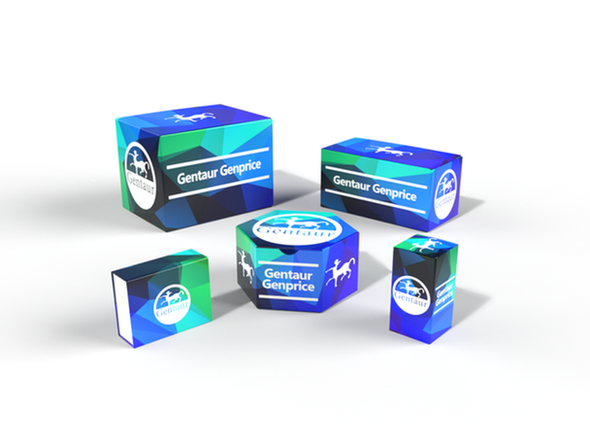Description
CIDE-A Antibody | 2085 | Gentaur UK, US & Europe Distribution
Host: Rabbit
Reactivity: Human
Homology: N/A
Immunogen: CIDE-A antibody was raised against a 18 amino acid peptide near the carboxy terminus of human CIDE-A.
The immunogen is located within the last 50 amino acids of CIDE-A.
Research Area: Apoptosis
Tested Application: E, WB, IHC-P, IF
Application: CIDE-A antibody can be used for detection of CIDE-A by Western blot at 2 μg/mL. An approximately 23 kDa band can be detected. Antibody can also be used for immunohistochemistry starting at 5 μg/mL. For immunofluorescence start at 20 μg/mL.
Antibody validated: Western Blot in human samples; Immunohistochemistry in human samples and Immunofluorescence in human samples. All other applications and species not yet tested.
Specificiy: It has no cross activity to CIDE-B.
Positive Control 1: Cat. No. 1303 - Human Brain Tissue Lysate
Positive Control 2: Cat. No. 10-301 - Human Brain Tissue Slide
Positive Control 3: N/A
Positive Control 4: N/A
Positive Control 5: N/A
Positive Control 6: N/A
Molecular Weight: 23 kDa
Validation: N/A
Isoform: N/A
Purification: CIDE-A Antibody is affinity chromatography purified via peptide column.
Clonality: Polyclonal
Clone: N/A
Isotype: IgG
Conjugate: Unconjugated
Physical State: Liquid
Buffer: CIDE-A Antibody is supplied in PBS containing 0.02% sodium azide.
Concentration: 1 mg/ml
Storage Condition: CIDE-A antibody can be stored at 4˚C for three months and -20˚C, stable for up to one year. As with all antibodies care should be taken to avoid repeated freeze thaw cycles. Antibodies should not be exposed to prolonged high temperatures.
Alternate Name: CIDE-A Antibody: CIDE-A, Cell death activator CIDE-A, Cell death-inducing DFFA-like effector A
User Note: Optimal dilutions for each application to be determined by the researcher.
BACKGROUND: CIDE-A Antibody: Apoptosis is related to many diseases and induced by a family of cell death receptors. Cell death signals are transduced by DD-, DED-, or CARD-containing molecules and members of the caspase family of proteases. These death signals finally cause the degradation of chromosomal DNA by activated DNase DFF40/CAD, which is chaperoned and inhibited by DFF45/ICAD. DFF45 related proteins CIDE-A and CIDE-B (for cell death-inducing DFF-like effector A and B) were recently identified. CIDE contains a new type of domain termed CIDE-N, which has high homology with the regulatory domains of DFF45/ICAD and DFF40/CAD. Expression of CIDE-A induces DNA fragmentation and activates apoptosis, which is inhibited by DFF45. CIDE-A is expressed in many tissues.










